An Experimental Investigation on the Relation between Corrosion and Thermohydraulic Behavior in Heat Exchangers for Geothermal Applications
Abstract
1. Introduction
- To determine the influence of corrosion on the performance of the heat exchanger;
- To determine the influence of flow on the corrosion process, i.e., static vs. dynamic conditions;
- To evaluate different possible corrosion monitoring approaches (e.g., pressure drop, heat transfer coefficient).
2. Materials and Methods
2.1. Setup Operation
2.2. Sample Analysis
3. Results and Discussions
3.1. Weight-Loss Experiments
- An increased supply of reactants;
- The continuous erosive removal of the corrosion products;
- The formation of different corrosion products due to the different conditions.
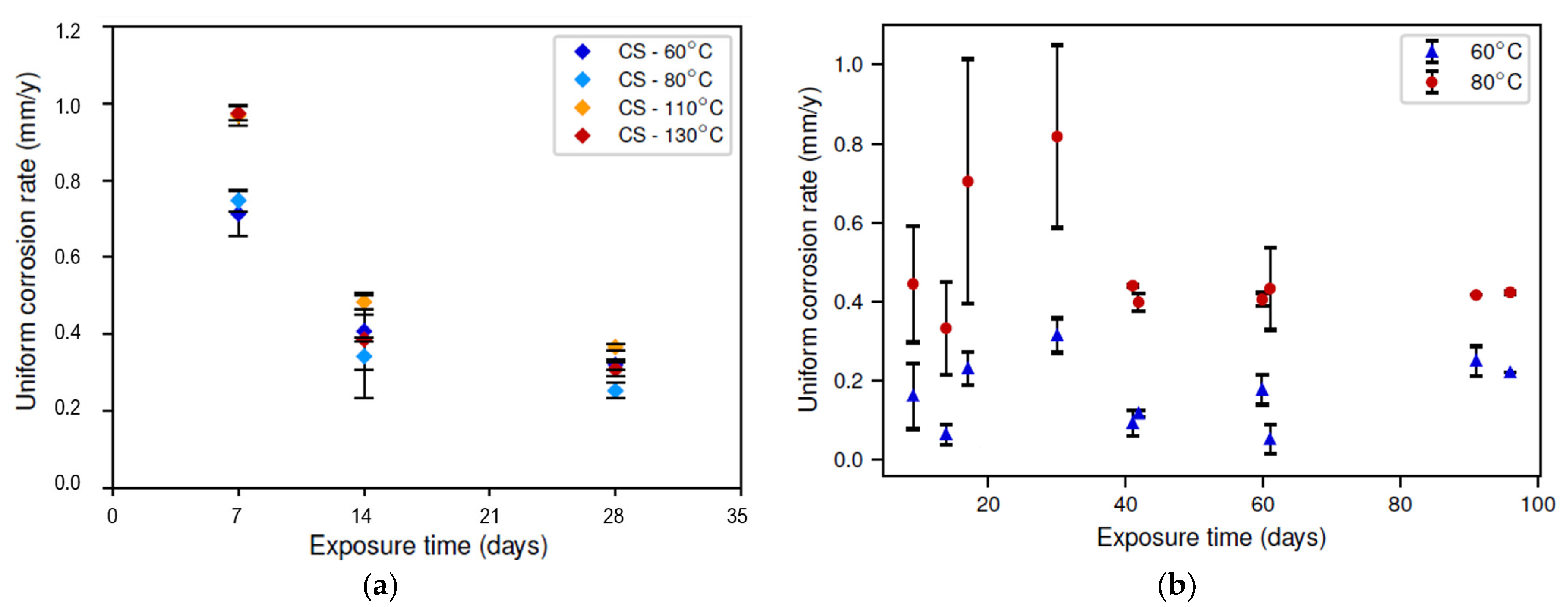
3.2. Microscopic Analysis
3.3. Assessment of New Measures for Corrosion
4. Conclusions
| Static vs. dynamic | Carbonates form under static conditions, whereas oxides form under dynamic conditions. |
| Effect of temperature | The corrosion rate in static conditions showed a local maximum, probably because of the counteracting effects of the Arrhenius law and the carbonate solubility. In dynamic conditions, the corrosion rate increased with increasing temperature, which could be explained by the Arrhenius relation. |
| Exposure time | The uniform corrosion rate first increased, then decreased, and eventually stabilized around 0.44 mm/y (at 80 °C). This trend is possibly related to the replacement of the initially present carbonate layer with a more stable oxide layer. |
| Pressure drop | The pressure drop over the heat exchanger appeared to remain unchanged. |
| Heat transfer coefficient | The heat transfer coefficient increased during the first 120 days to 106% of the initial value (i.e., an increase of almost 6%), but then decreased again. |
| Corrosion indicator | Overall, the influence of corrosion on the thermohydraulic performance was limited. It is clear that the pressure drop over the heat exchanger cannot be used as an indicator of corrosion. On the other hand, an increasing heat transfer coefficient might be able to indicate heat exchanger tube thinning. However, further research is required to know whether the growth of a corrosion layer could counter this increasing heat transfer coefficient. |
Author Contributions
Funding
Data Availability Statement
Acknowledgments
Conflicts of Interest
References
- Koch, G.; Varney, J.; Thompson, N.; Moghissi, O.; Gould, M.; Payer, J. International Measures of Prevention, Application, and Economics of Corrosion Technologies Study; NACE International: Houston, TX, USA, 2016. [Google Scholar]
- SOCORRO. Challenge. Available online: https://www.socorro.eu/ (accessed on 4 February 2024).
- Roberge, P.R. Corrosion Engineering—Practices vs. Principles; McGraw Hill: New York City, NY, USA, 2008. [Google Scholar] [CrossRef]
- Electric Power Research Institute; Gorman, J.; Arey, M.; Koch, G. Cost of Corrosion in the Electric Power Industry; Electric Power Research Institute: Washington, DC, USA, 2001. [Google Scholar]
- Syrett, B.C.; Gorman, J.A. Cost of corrosion in the electric power industry: An update. Mater. Perform. 2002, 42, 32–38. [Google Scholar]
- Biezma, M.V.; Cristóbal, J.R.S. Methodology to study cost of corrosion. Corros. Eng. Sci. Technol. 2005, 40, 344–352. [Google Scholar] [CrossRef]
- Ermolina, L.V.; Alekina, E.V.; Sorokina, L.V. Methods of Corrosion Mitigation in the Gas and Oil Industry. In Proceedings of the International Conference Engineering Innovations and Sustainable Development (Springer Nature), Tanjungpinang, Indonesia, 11–13 October 2022; pp. 135–143. [Google Scholar]
- Briffa, J.; Sinagra, E.; Blundell, R. Heavy metal pollution in the environment and their toxicological effects on humans. Heliyon 2020, 6, e04691. [Google Scholar] [CrossRef] [PubMed]
- Tchounwou, P.B.; Yedjou, C.G.; Patlolla, A.K.; Sutton, D.J. Heavy Metal Toxicity and the Environment. In Molecular, Clinical and Environmental Toxicology; Springer: Berlin/Heidelberg, Germany, 2012; pp. 133–164. Available online: https://link.springer.com/chapter/10.1007/978-3-7643-8340-4_6#citeas (accessed on 4 February 2024).
- STOUT. Rare Earth Risk: How Material Scarcity May Impact Risk in Damages Projections. Available online: https://www.stout.com/en/insights/article/rare-earth-risk-how-material-scarcity-may-impact-risk-damages-projections (accessed on 4 February 2024).
- Henckens, T. Scarce mineral resources: Extraction, consumption and limits of sustainability. Resour. Conserv. Recycl. 2021, 169, 105511. [Google Scholar] [CrossRef]
- WorldStainless. Stainless Steels and CO2: Industry Emissions and Related Data. Available online: https://www.worldstainless.org/about-stainless/environment/stainless-steels-and-co2-industry-emissions-and-related-data/ (accessed on 4 February 2024).
- European Commission. EU Climate Targets: How to Decarbonise the Steel Industry. EU Science Hub. 2022. Available online: https://joint-research-centre.ec.europa.eu/jrc-news-and-updates/eu-climate-targets-how-decarbonise-steel-industry-2022-06-15_en (accessed on 4 February 2024).
- IEA. Steel. Available online: https://www.iea.org/energy-system/industry/steel (accessed on 4 February 2024).
- Worldsteel. Association. Climate Change and the Production of Iron and Steel. Available online: https://worldsteel.org/publications/policy-papers/climate-change-policy-paper/ (accessed on 4 February 2024).
- Lancaster, J.F. Corrosion and Other Types of Damage. In Heat Exchanger Design Handbook; Hemisphere Publishing Corporation: London, UK, 2023. [Google Scholar] [CrossRef]
- Faes, W.; Lecompte, S.; Ahmed, Z.Y.; Van Bael, J.; Salenbien, R.; Verbeken, K.; De Paepe, M. Corrosion and corrosion prevention in heat exchangers. Corros. Rev. 2019, 37, 131–155. [Google Scholar] [CrossRef]
- Kuźnicka, B. Erosion-corrosion of heat exchanger tubes. Eng. Fail. Anal. 2009, 16, 2382–2387. [Google Scholar] [CrossRef]
- Xie, J.; Yazdanfar, K.; Anning, G.; Rockwell, T.; Ahmed, A. Corrosion of a Vertical Shell and Tube Heat Exchanger; NACE CORROSION: Dallas, TX, USA, 2015. [Google Scholar]
- Deen, K.M.; Virk, M.A.; Haque, C.I.; Ahmad, R.; Khan, I.H. Failure investigation of heat exchanger plates due to pitting corrosion. Eng. Fail. Anal. 2010, 17, 886–893. [Google Scholar] [CrossRef]
- Turissini, R.L.; Bruno, T.V.; Dahlberg, E.P.; Setterlund, R.B. Corrosion Failures in Plate Heat Exchangers; NACE CORROSION: New Orleans, LA, USA, 1997. [Google Scholar]
- Pessu, F.O.; Saleem, E.; Espejo, C.; Neville, A. Understanding the local pitting corrosion characteristics of carbon steel in CO2 corrosion environment using artificially machined pits. Results Eng. 2022, 16, 14. [Google Scholar] [CrossRef]
- Faes, W.; Lecompte, S.; Van Bael, J.; Salenbien, R.; Bäßler, R.; Bellemans, I.; Cools, P.; De Geyter, N.; Morent, R.; Verbeken, K.; et al. Corrosion behaviour of different steel types in artificial geothermal fluids. Geothermics 2019, 82, 182–189. [Google Scholar] [CrossRef]
- Bureau for Standardisation. NBN EN 10305-4: Steel Tubes for Precision Applications—Technical Delivery Conditions—Part 4: Seamless Cold Drawn Tubes for Hydraulic and Pneumatic Power Systems. Available online: https://www.nen.nl/nen-en-10305-4-2016-en-218388 (accessed on 27 January 2023).
- Zhao, Y.; Qi, Z.; Wang, Q.; Chen, J.; Shen, J. Effect of corrosion on performance of fin-and-tube heat exchangers with different fin materials. Exp. Therm. Fluid Sci. 2012, 37, 98–103. [Google Scholar] [CrossRef]
- Laird Thermal Systems. Corrosion Prevention in Cooling Loops. Available online: https://lairdthermal.com/thermal-technical-library/application-notes/corrosion-prevention-cooling-loops (accessed on 4 February 2024).
- De Ketelaere, E.; Moed, D.; Vanoppen, M.; Verliefde, A.R.D.; Verbeken, K.; Depover, T. Sodium silicate corrosion inhibition behaviour for carbon steel in a dynamic salt water environment. Corros. Sci. 2023, 217, 111119. [Google Scholar] [CrossRef]
- Tummers, M.J.; Steunebrink, M. Effect of surface roughness on heat transfer in Rayleigh-Bénard convection. Int. J. Heat Mass Transf. 2019, 139, 1056–1064. [Google Scholar] [CrossRef]
- Geete, A.; Pathak, R. Effect of surface roughness on the performance of heat exchanger. SN Appl. Sci. 2019, 1, 901. [Google Scholar] [CrossRef]
- Burkle, D.P. Understanding the Formation of Protective FeCO3 on to Carbon Steel Pipelines during CO2 Corrosion. Ph.D. Thesis, University of Leeds, Leeds, UK, 2017. Available online: http://etheses.whiterose.ac.uk/17608/ (accessed on 4 February 2024).
- Silva, P.N.; Svenningsen, G.; Dugstad, A.; Gomes, J.A.C.P. The effect of oxygen on the CO2 corrosion of tensile wires in simulated annulus environments of flexible pipes. Mater. Corros. 2022, 73, 669–686. [Google Scholar] [CrossRef]
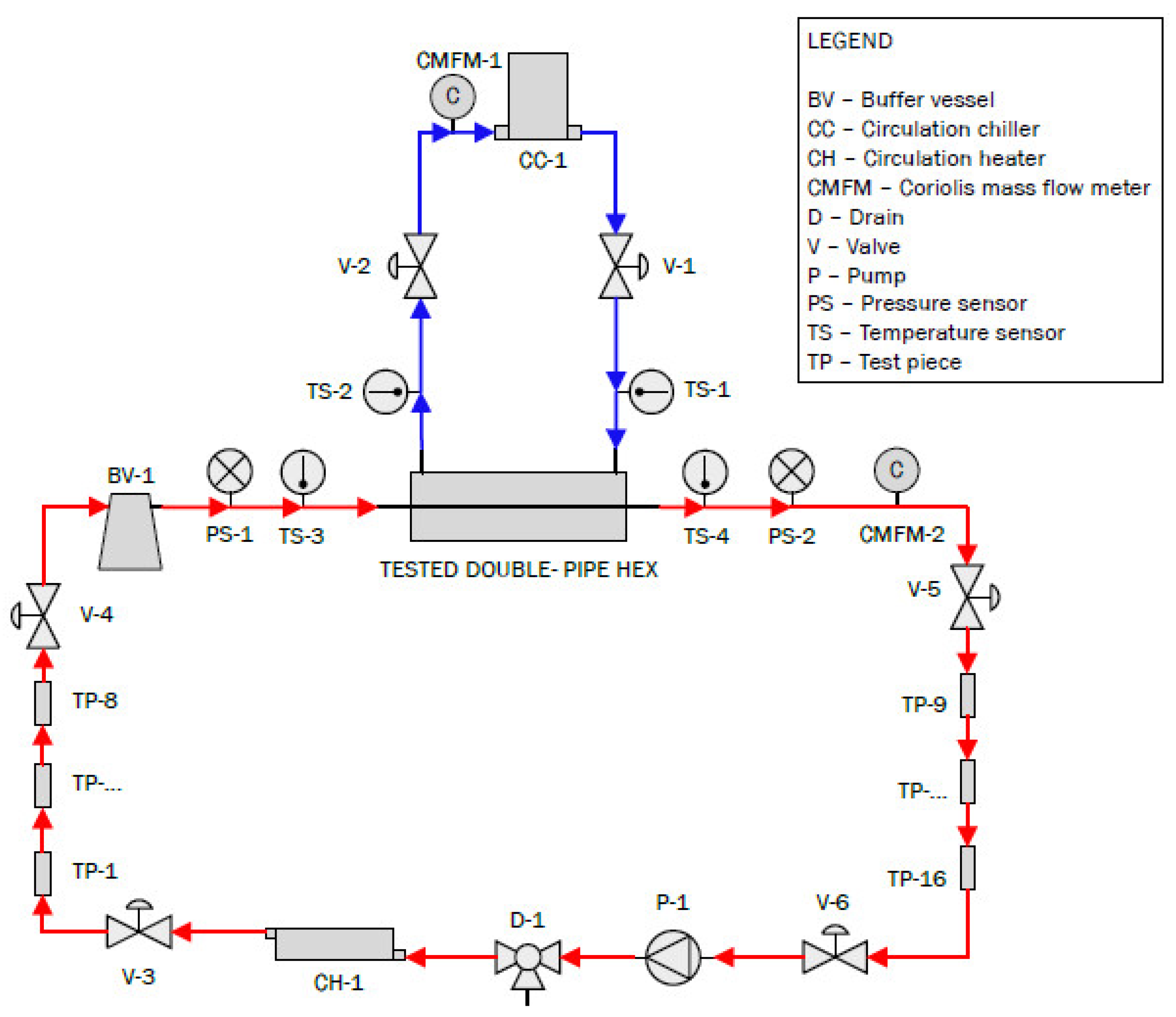
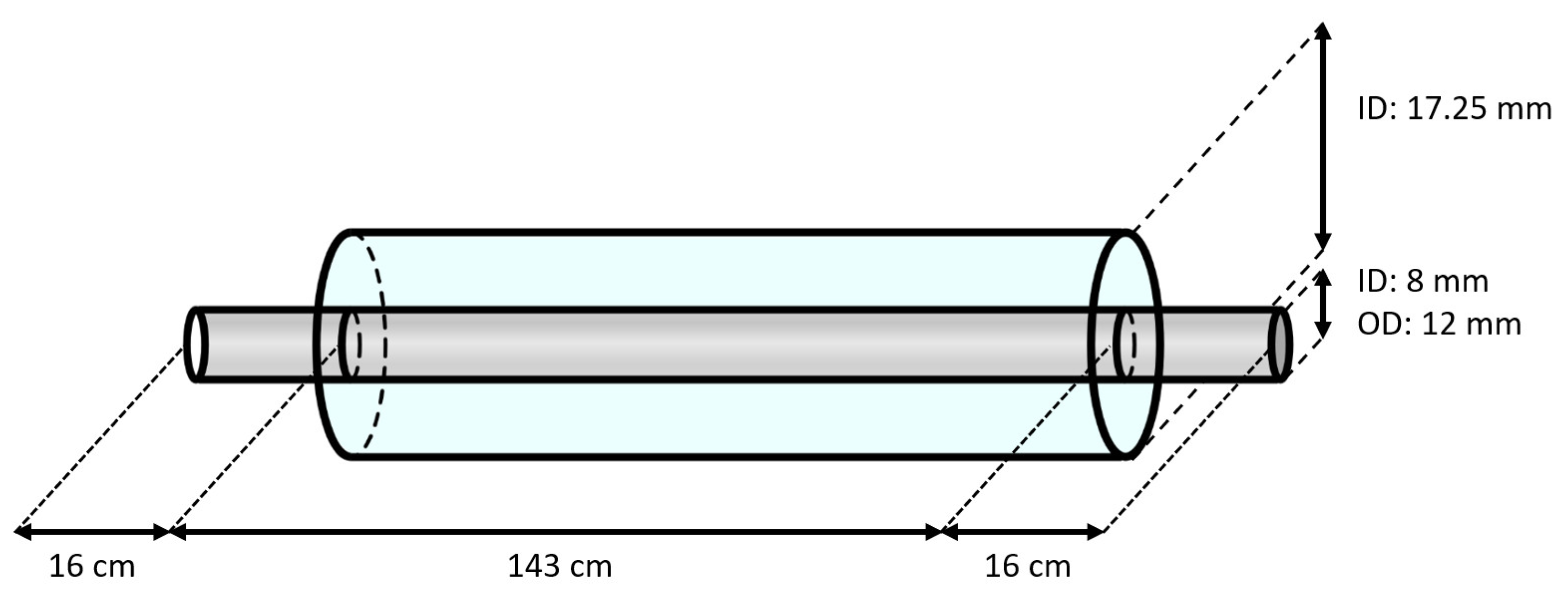
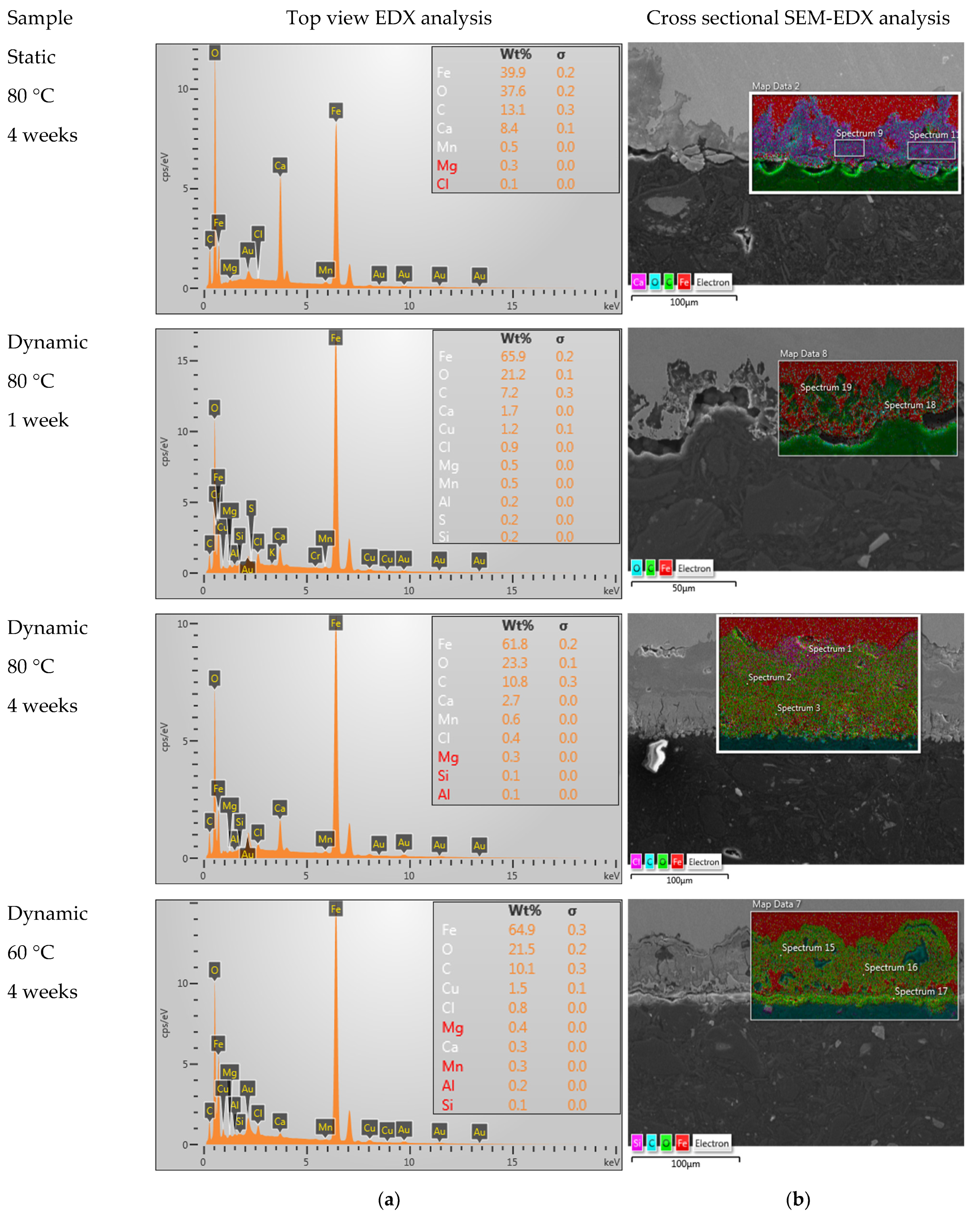

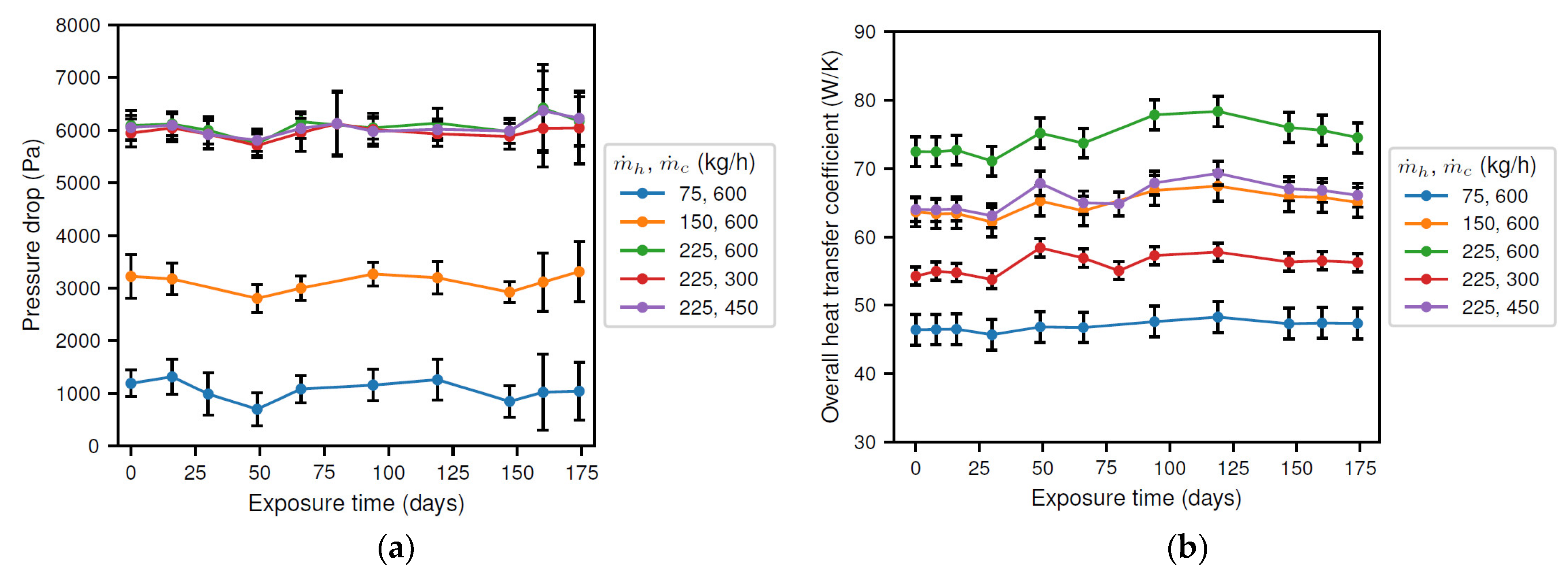
| Na+ | Ca2+ | K+ | Mg2+ | Fe2+ | Cl− | SO42− | HCO3− | pH | |
|---|---|---|---|---|---|---|---|---|---|
| Concentration (mg/L) | 49,761 | 7574 | 3278 | 495 | 802 | 94,664 | 350 | 1120 | ~5 |
| C | S | P | Si | Cr | Fe | |
|---|---|---|---|---|---|---|
| Concentration (mg/L) | 40.17 | 0.015 | 0.025 | 0.35 | - | Balance |
| Sample | Ca (wt%) | Fe (wt%) | C (wt%) | O (wt%) | FeO (wt%) | FeCO3 (wt%) | CaCO3 (wt%) | Corrosion Depth (µm) |
|---|---|---|---|---|---|---|---|---|
| Static, 80 °C, 4 w | 8.4 | 39.9 | 13.1 | 37.6 | 15.9 | 61.8 | 22.2 | 20–85 |
| Dynamic, 80 °C, 1 w | 1.7 | 65.9 | 7.2 | 21.2 | 94.2 | 1.0 | 4.8 | ±25 |
| Dynamic, 80 °C, 4 w | 2.7 | 61.8 | 10.8 | 23.3 | 83.0 | 9.4 | 7.6 | ±100 |
| Dynamic, 60 °C, 4 w | 0.3 | 64.9 | 10.1 | 21.5 | 88.9 | 10.3 | 0.8 | 50–70 |
| FeCO3 | - | 48.2 | 10.4 | 41.4 | - | 100 | - | |
| FeO | - | 77.7 | - | 22.3 | 100 | - | - | |
| CaCO3 | 40 | - | 12 | 48 | - | - | 100 |
Disclaimer/Publisher’s Note: The statements, opinions and data contained in all publications are solely those of the individual author(s) and contributor(s) and not of MDPI and/or the editor(s). MDPI and/or the editor(s) disclaim responsibility for any injury to people or property resulting from any ideas, methods, instructions or products referred to in the content. |
© 2024 by the authors. Licensee MDPI, Basel, Switzerland. This article is an open access article distributed under the terms and conditions of the Creative Commons Attribution (CC BY) license (https://creativecommons.org/licenses/by/4.0/).
Share and Cite
Simons, A.; Faes, W.; Depover, T.; Lecompte, S.; De Paepe, M.; Verbeken, K. An Experimental Investigation on the Relation between Corrosion and Thermohydraulic Behavior in Heat Exchangers for Geothermal Applications. Metals 2024, 14, 217. https://doi.org/10.3390/met14020217
Simons A, Faes W, Depover T, Lecompte S, De Paepe M, Verbeken K. An Experimental Investigation on the Relation between Corrosion and Thermohydraulic Behavior in Heat Exchangers for Geothermal Applications. Metals. 2024; 14(2):217. https://doi.org/10.3390/met14020217
Chicago/Turabian StyleSimons, Arne, Willem Faes, Tom Depover, Steven Lecompte, Michel De Paepe, and Kim Verbeken. 2024. "An Experimental Investigation on the Relation between Corrosion and Thermohydraulic Behavior in Heat Exchangers for Geothermal Applications" Metals 14, no. 2: 217. https://doi.org/10.3390/met14020217
APA StyleSimons, A., Faes, W., Depover, T., Lecompte, S., De Paepe, M., & Verbeken, K. (2024). An Experimental Investigation on the Relation between Corrosion and Thermohydraulic Behavior in Heat Exchangers for Geothermal Applications. Metals, 14(2), 217. https://doi.org/10.3390/met14020217







